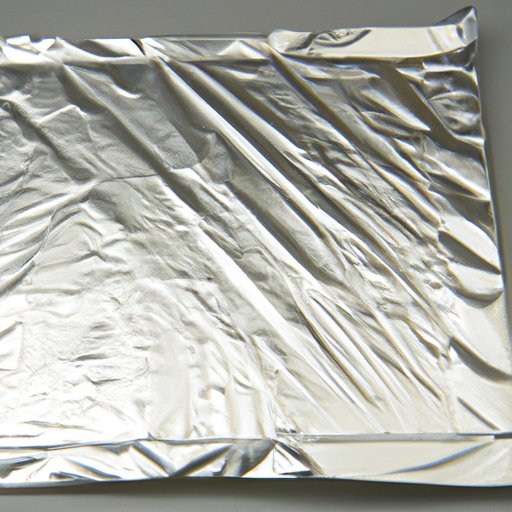
Introduction
When it comes to cooking in the microwave, it’s important to know which materials are safe to use and which should be avoided. Many people wonder: can you put foil in the microwave? The answer is not a simple yes or no. In this article, we will explore the dos and don’ts of using foil in the microwave and provide tips for safe and effective microwave cooking.
How to Use Foil Safely in Your Microwave
The first thing to understand is that not all foil is created equal. Some types of foil are safe for microwave use, while others are not. It’s important to look for microwave-safe labeling on the packaging before using foil in the microwave.
When using aluminum foil in the microwave, it’s best to use short, narrow strips or small pieces to cover less-sensitive areas of the food, such as poultry legs or wings, and shield them from overcooking. To prevent sparks and avoid uneven cooking, it’s best to use an alternative method, like a microwave-safe dish with a lid or plastic wrap, to cover the rest of the food.
Microwave Dos and Don’ts: Is Foil Safe?
According to the USDA, some aluminum foils are safe for use in the microwave. These include non-scratched, smooth foil and trays made of aluminum foil. However, if the foil is wrinkled, bent, or damaged, it should not be used for microwaving, as it can cause arcing, or spark, and create a fire hazard.
Foil with a crinkled surface should also be avoided and replaced with a new piece, as the uneven surface can lead to overheating and result in an electrical fire. In addition, it is important to avoid using metal twist-ties or metal handles of aluminum foil containers in the microwave, as they can also cause sparks.
The Dangers of Putting Foil in Your Microwave
The biggest danger of putting foil in your microwave is that it can cause a fire. Foil can easily melt and spark in the intense heat of a microwave, creating a dangerous flame. In addition, if the foil is twisted or crumpled, it can create a spark that can ignite the food or the microwave itself. All these can lead to a range of health hazards like burns, spillage, etc.
The Science Behind Why Foil and Microwaves Don’t Mix
The reason why foil and microwaves don’t mix is due to the electromagnetic radiation that makes up microwaves. This radiation is absorbed by metal, which creates an electric current. With the thin and twisted nature of aluminum foil, this electricity can arc or spark, resulting in a fire.
Alternatives to Foil for Microwave Cooking
If you’re looking for an alternative to foil for microwave cooking, there are several options. One popular choice is microwave-safe plastic wrap. This wrap is specifically designed for use in the microwave and won’t melt or release harmful chemicals into your food.
You can also use microwave-safe glass, paper, or ceramic dishes with a lid or cover for your microwave cooking. These materials won’t conduct electricity, so they are safe to use in the microwave without creating a fire hazard.
Tips for Safe Microwave Cooking without Foil
If you’re cooking in the microwave without foil, there are some important tips to keep in mind. First, make sure you’re using microwave-safe dishes that won’t melt or spark. Covering your food with a microwave-safe lid or paper towel can help prevent splatters and messes.
It’s also important to monitor your food closely. Microwaves cook quickly and can overcook food if left unattended. Always check your food frequently and remove it from the microwave as soon as it’s done cooking.
Conclusion
Using foil in the microwave can be a risky venture. It’s important to understand the dangers associated with foil in the microwave and use it only when it’s safe to do so. If you’re unsure about whether or not it’s safe to use foil in your microwave, it’s best to err on the side of caution and use an alternative material.
When it comes to microwave cooking, safety should always be a top priority. By following these guidelines and using healthy alternatives, you can enjoy convenient, worry-free, and safe microwave cooking.




